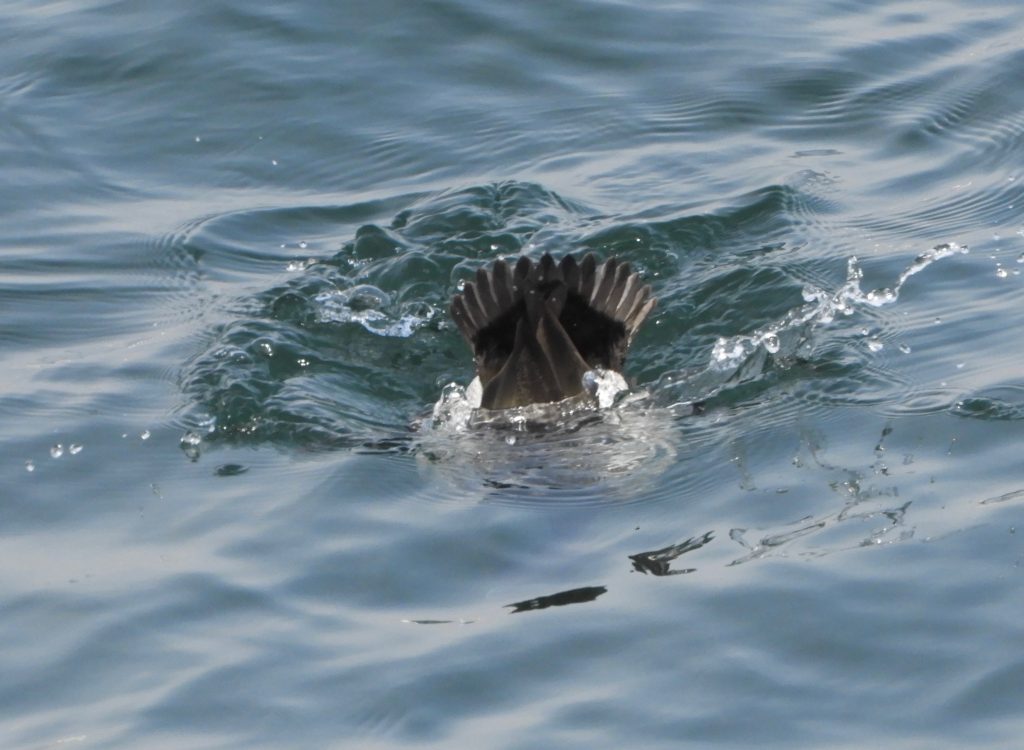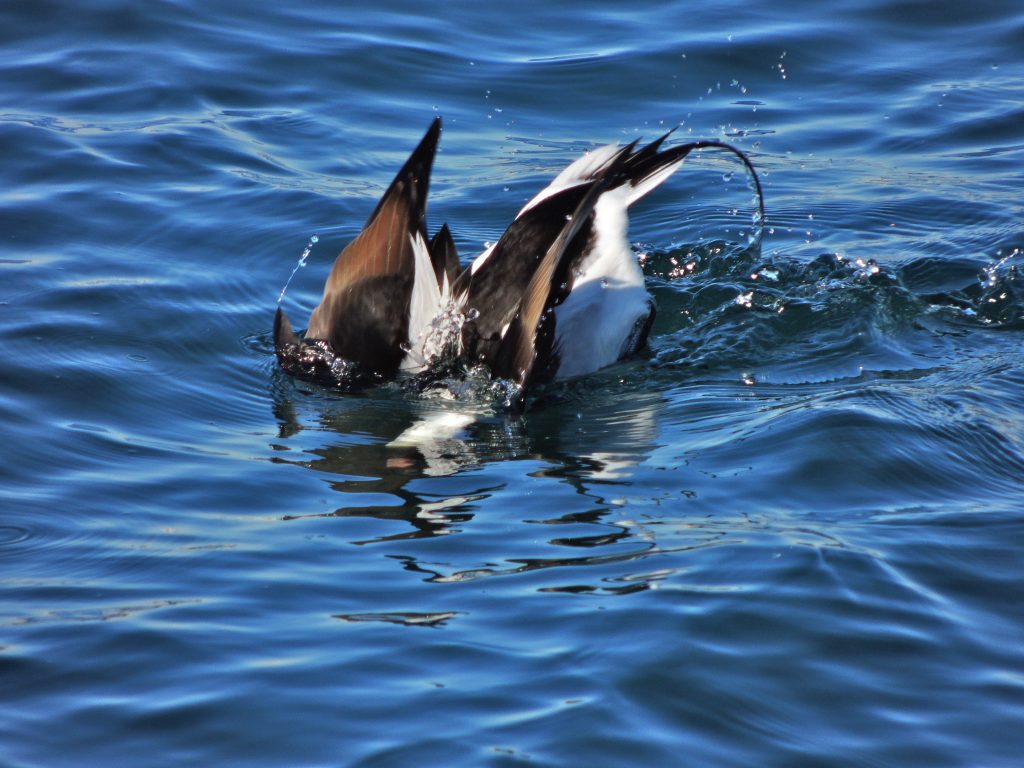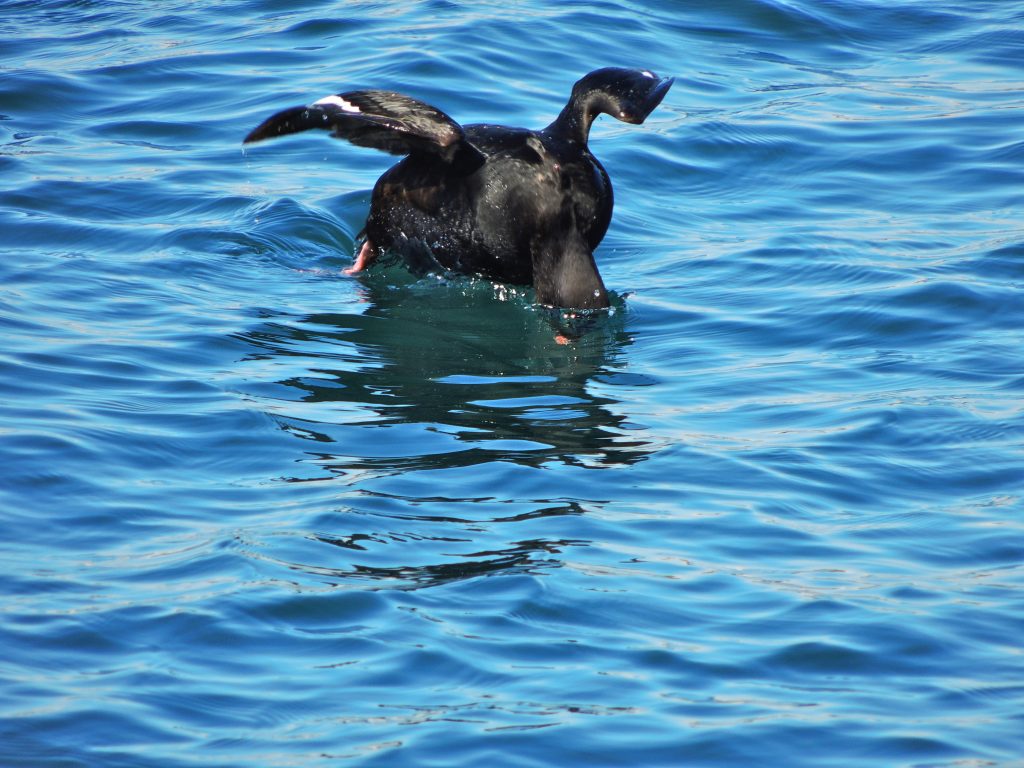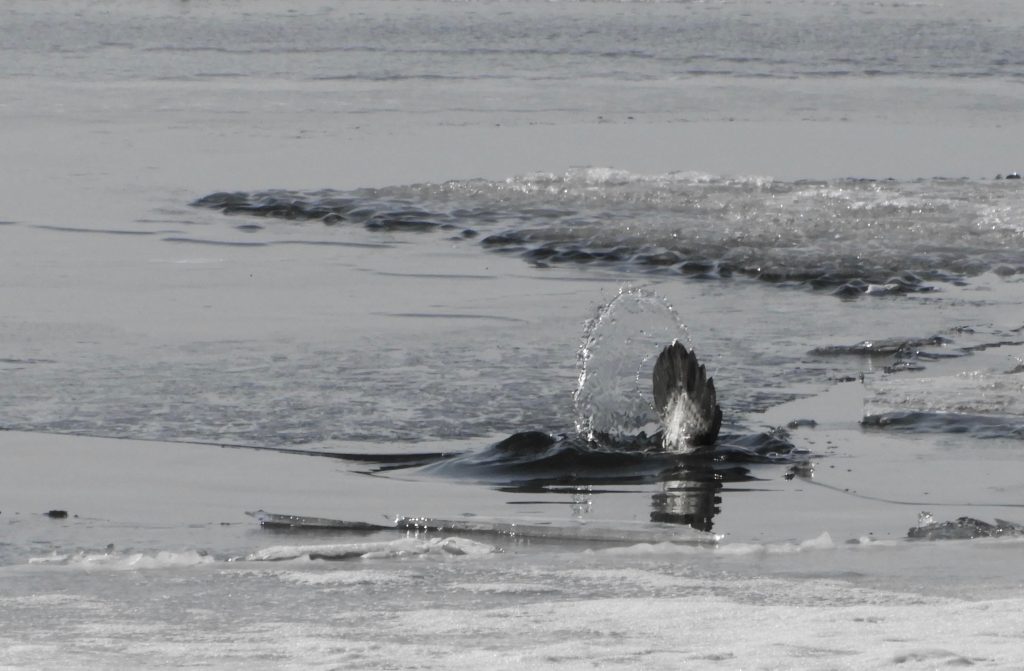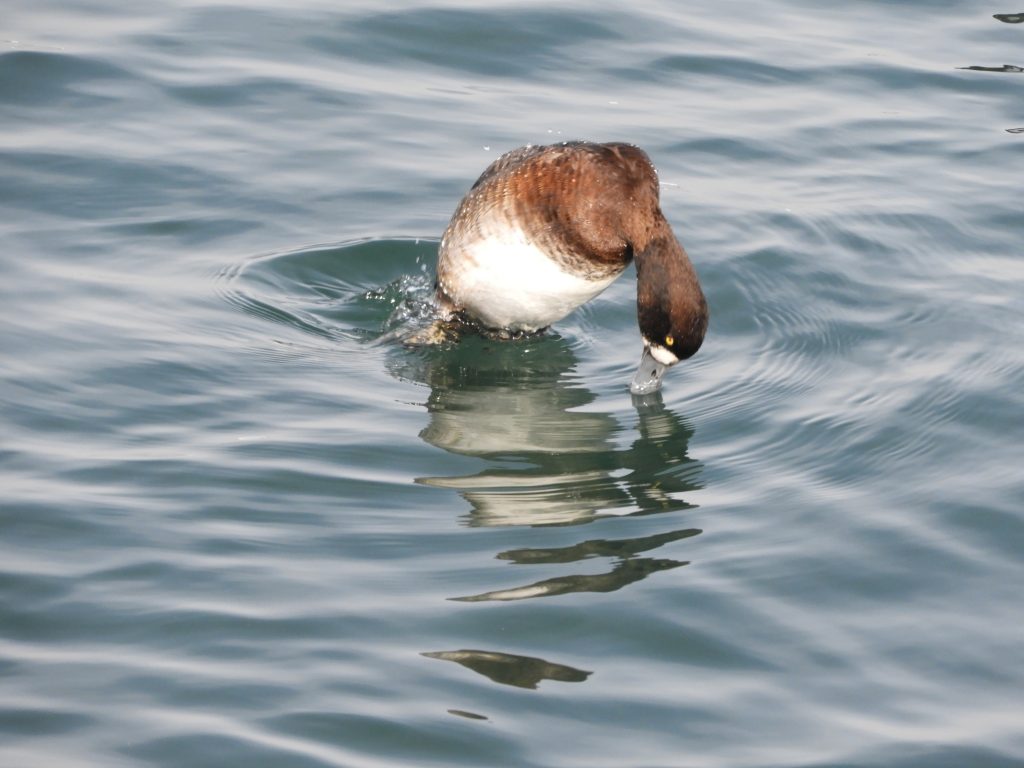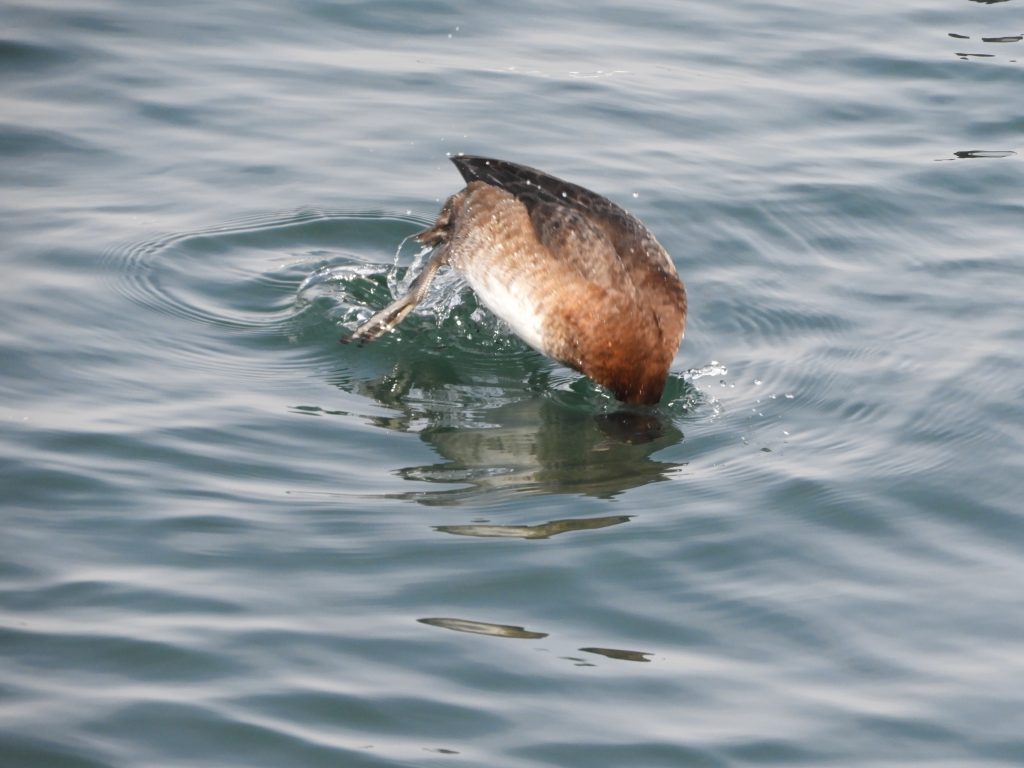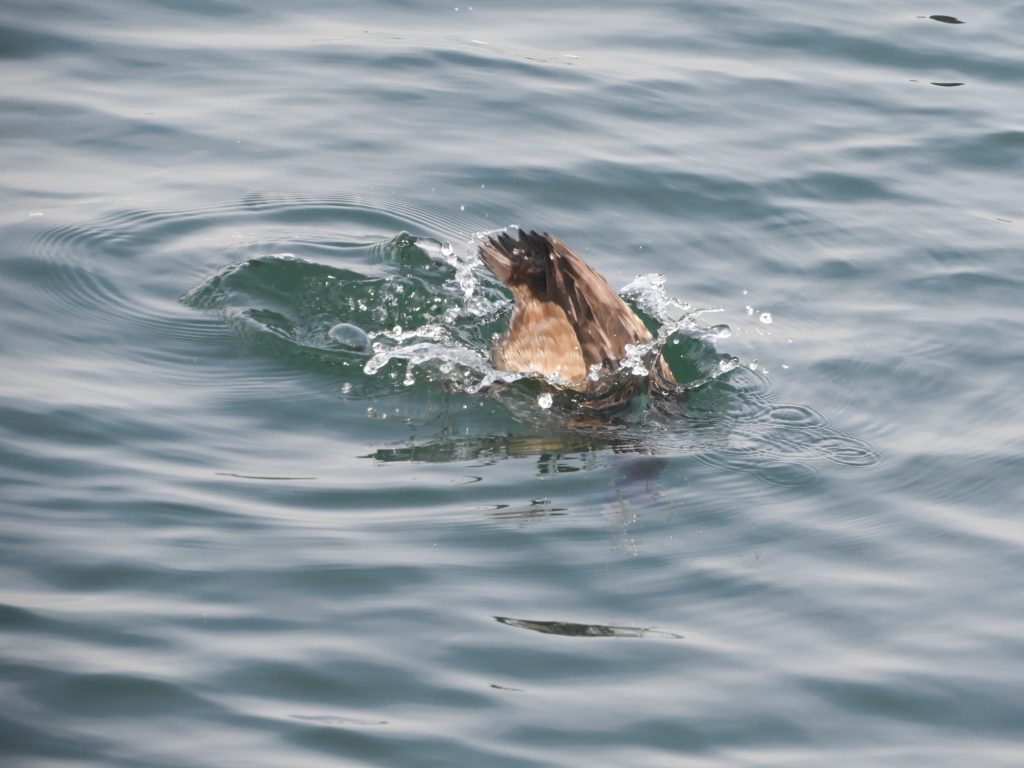
Burlington Canal, Hamilton & Burlington, ON. February 1 2022. I’ve often promised myself not to waste any more winter days birding the canal. The selection of likely ducks is just too limited, or so it seems from a distance. But then, along comes a day like this, we get a break in the weather and I can’t resist the urge to get out and see what’s there. So, I ended up at the canal as I vowed I wouldn’t and well, it was fascinating.
The canal is a kilometre-long waterway connecting the St. Lawrence Seaway waters of Lake Ontario with our large natural harbour. It’s a serious deep-water canal, crossed by towering road bridges and deep enough for ocean-going ships. In winter months, when the harbour ices over, the waters of the canal stay more or less open thanks to the surging ebb and flow of the lake.
The canal, for all of its no-nonsense, industrial feel, is a safe, food-rich refuge for diving ducks: Long-tailed Ducks principally (by the thousand), but also scores of White–winged Scoters, Goldeneyes, Greater and Lesser Scaup, Red–breasted Mergansers and more. They’re just getting by, waiting out the winter on a diet of fish (presumably), mussels, and whatever else lurks along the hard, concrete edges.
I became absorbed watching them dive and trying to understand how they dive. Someone should do a study. No, I bet someone already has.
Here are a few of my own superficial observations from watching Long-tailed Ducks, White-winged Scoters, Lesser Scaup and Hooded Mergansers making dives. The mechanics seemed to be the same in every case. There is no declarative pose, no build up or acrobatic plunge. Rather, the only apparent hint of an imminent dive is an almost imperceptible stiffening of the neck, so imperceptible that in one smooth arching thrust it’s all over and the duck’s head is under pulling its body behind. Like this…
Out of hundreds of photos of dives, I was only able to get this lucky series above. It’s a female Lesser Scaup and it’s apparent that her body momentarily comes clear out of the water as she arches over. Not a dive you’d see on Coca Cola’s Olympics, but a dive that has served this species for thousands, if not millions, of years.
I’m certain (because my camera records times) that less than one second elapses while: The bird stiffens, My brain says go, My finger does as it’s told and, the camera takes the first photo; and nine times out of ten that’s not fast enough. My usual results are more like this.
